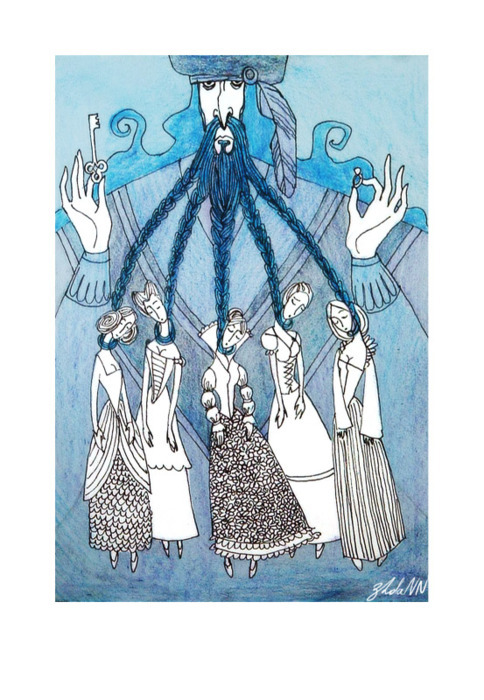Before this week, Bluebeard was a fairy tale that I had never heard of. I was under the impression he was a crazy pirate - some estranged relative of Blackbeard or the Flying Dutchman. After the first words of Tatar's introduction, however, I was in love with the concept.
(Some version of what I thought Blue Beard was)
Out of the tales we read, Mr. Fox resonated most with me. The heroine was intelligent, clever, proactive, "a brave one, she was," and saved herself. It also seemed the most realistic of the tales, one that I could easily relate to. It applies not only to potential romantic relationships, but any new person that you could meet. It is the classic "skeleton in the closet" idea - you may think you know someone until you accidentally stumble upon the most unattractive hidden part of them.
Perrault's version of the tale was certainly my least favorite. I have a problem with Perrault in general, providing not only a forced interpretation of his tales, but a sexist one at that. It may be part of the Zeitgest, and his aristocratic stance, but it certainly doesn't flatter his writing. The moral he includes at the end was the worst of it for me, with his generalized assumptions that "no longer are husbands so terrible," and that "with their wives they toe the line … it's not hard to tell which of the pair is master." Marriage should not be thought of as a hierarchy with a master and a subordinate, but rather a union where the two work together as equals to help each other out - this is my own personal definition of marriage anyway.
I really like the creepiness of the tale, setting it apart from the blunt violence in the others we have read. For instance, in Hansel and Gretel, the heroes' death by fire is avoided, with Snow White, she awakens from her poison, from Beauty and the Beast, the Beast transforms from his spell. The corpses in the bloody chamber, however, are assuredly dead, and have no chance of reanimation (with the exception of the Grimm tale). These corpses represent untold tales where the heroines don't make it out alive, and they have no "happy ending". The idea that there is no hope, no turning back, no happiness for these ladies gives a sense of sadness to the reader - a moment more. Tatar mentions in her introduction about the horrid nature of the scene, how some are "unable to erase the graphic impressions," haunting readers with a negative image far harsher than any other tale we have read.
wc: 490


No comments:
Post a Comment